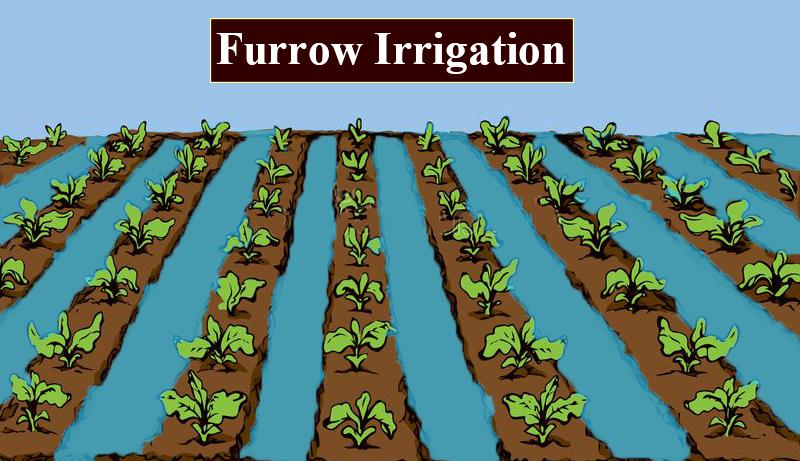
Furrow irrigation is seen in:
(a)Chilly
(b)Cotton
(c)Mango
(d)Groundnut
Answer
564.9k+ views
Hint: Irrigation is the process of artificially supplying controlled amounts of water to the crops to let them grow properly. Furrow irrigation is a type of irrigation that has been used for a long time because of its efficiency and cost-effectiveness.
Complete answer:
In furrow irrigation, trenches or “furrows” are dug between crop rows in a field. These furrows are dug along the slope of the field so that water will flow because of gravity and no external force will be required. This is why it is so cost-effective as it uses natural forces for its functioning. This type of irrigation works best for crops that can be planted in a row. An advantage of this type of irrigation is that water is not in direct contact with the plant thus does not cause harm to its roots.
One of the main disadvantages of furrow irrigation is that the water which is left to stand in the furrows gets evaporated by the sun, thus causing loss of water.
Plants like cotton, corn, and sugarcane are grown using furrow irrigation.
Additional Information:
Let us look at the other types of irrigation used to grow crops.
Localized irrigation: Water is supplied to each plant by a pipe network that is pumped using low pressure.
Drip irrigation: Drops of water are applied near the roots of the plant to avoid loss by evaporation.
Sprinkler irrigation: Water is sprinkled all over the field using high-pressure sprinklers.
So, the correct option is ‘Cotton’.
Note: -There is also a method in which the water supply to crops is based on relying upon rain. This is known as rain-fed farming.
-This method may result in water shortages as rainfall cannot be predicted accurately.
-There are high chances of contamination when artificial irrigation is provided to crops.

Complete answer:
In furrow irrigation, trenches or “furrows” are dug between crop rows in a field. These furrows are dug along the slope of the field so that water will flow because of gravity and no external force will be required. This is why it is so cost-effective as it uses natural forces for its functioning. This type of irrigation works best for crops that can be planted in a row. An advantage of this type of irrigation is that water is not in direct contact with the plant thus does not cause harm to its roots.
One of the main disadvantages of furrow irrigation is that the water which is left to stand in the furrows gets evaporated by the sun, thus causing loss of water.
Plants like cotton, corn, and sugarcane are grown using furrow irrigation.
Additional Information:
Let us look at the other types of irrigation used to grow crops.
Localized irrigation: Water is supplied to each plant by a pipe network that is pumped using low pressure.
Drip irrigation: Drops of water are applied near the roots of the plant to avoid loss by evaporation.
Sprinkler irrigation: Water is sprinkled all over the field using high-pressure sprinklers.
So, the correct option is ‘Cotton’.
Note: -There is also a method in which the water supply to crops is based on relying upon rain. This is known as rain-fed farming.
-This method may result in water shortages as rainfall cannot be predicted accurately.
-There are high chances of contamination when artificial irrigation is provided to crops.

Recently Updated Pages
Master Class 12 Business Studies: Engaging Questions & Answers for Success

Master Class 12 Economics: Engaging Questions & Answers for Success

Master Class 12 English: Engaging Questions & Answers for Success

Master Class 12 Maths: Engaging Questions & Answers for Success

Master Class 12 Social Science: Engaging Questions & Answers for Success

Master Class 12 Chemistry: Engaging Questions & Answers for Success

Trending doubts
Which places in India experience sunrise first and class 9 social science CBSE

Fill the blanks with the suitable prepositions 1 The class 9 english CBSE

Write the 6 fundamental rights of India and explain in detail

Difference Between Plant Cell and Animal Cell

What is pollution? How many types of pollution? Define it

What is the full form of pH?




